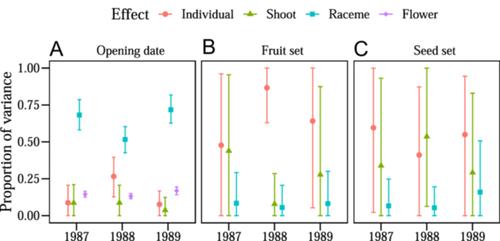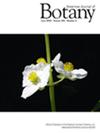In plants, within-individual trait variation might result from mechanisms related to ontogenetic contingency, i.e., to the position of a particular structure within the plant, previous developmental events, and/or the developmental environment. Flower position within inflorescences as well as inflorescence position within plants can influence resource provisioning, phenology, biotic interactions, and reproductive success. Despite the potential implications of within-individual variation in plant reproductive phenotypes, its causes and effects on reproductive success are still little explored.
We assessed how reproductive success, in terms of fruit and seed set, and seed predation of 5883 flowers in Lathyrus vernus were influenced by their position within and among racemes, to what extent relationships between flower position and reproductive success and seed predation were mediated by phenology, and if positional effects on reproductive success depended on the external environment.
In three years, basal flowers and racemes opened earlier and had higher fruit set than distal. Basal flowers also experienced higher seed predation. Differences among racemes in fruit and seed set were largely related to phenology, while differences in fruit set, seed set, and seed predation within racemes were not. In one year, differences in fruit set among flowers at different positions depended on flowering duration.
Our results highlight the important role of ontogenetic contingency for within-individual variation in phenology and reproductive success. As the spatial distribution of reproductive structures affects both within-plant trait distributions and fitness, it is a likely target for natural selection.



